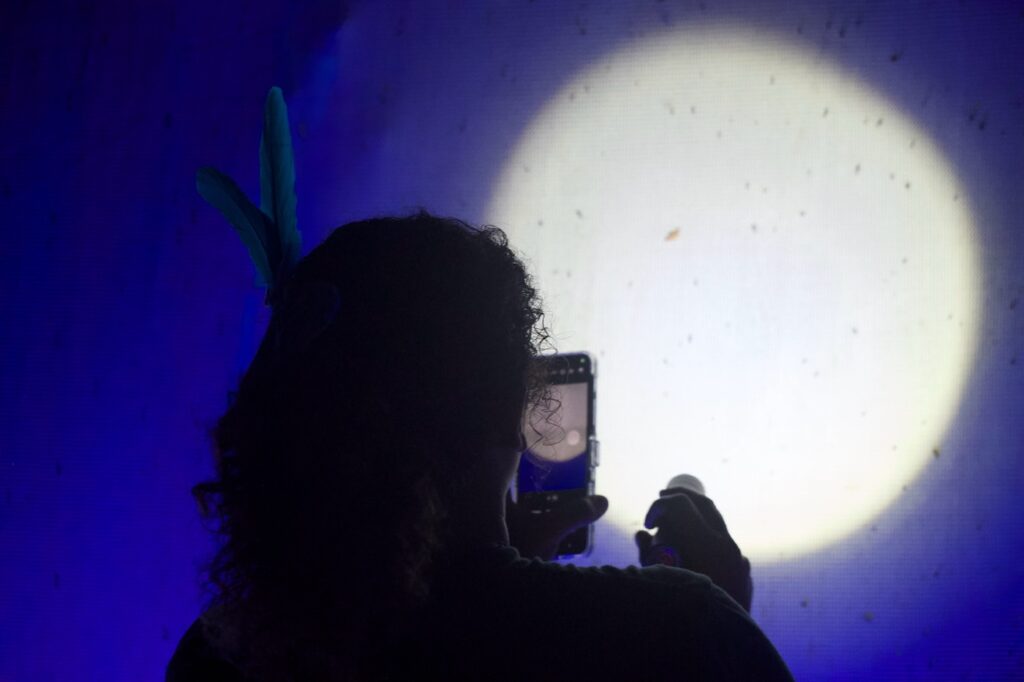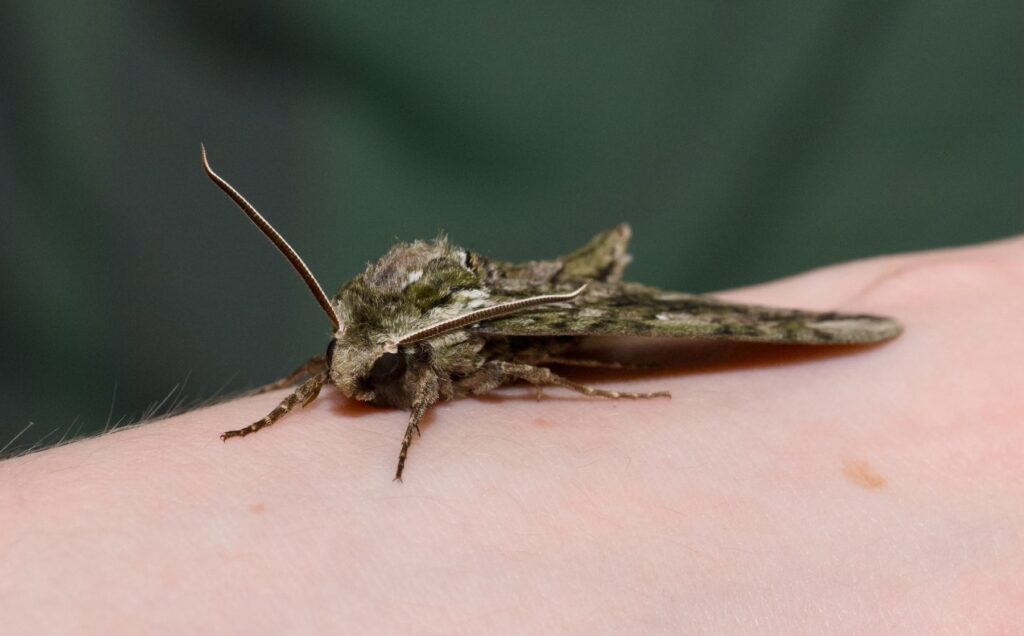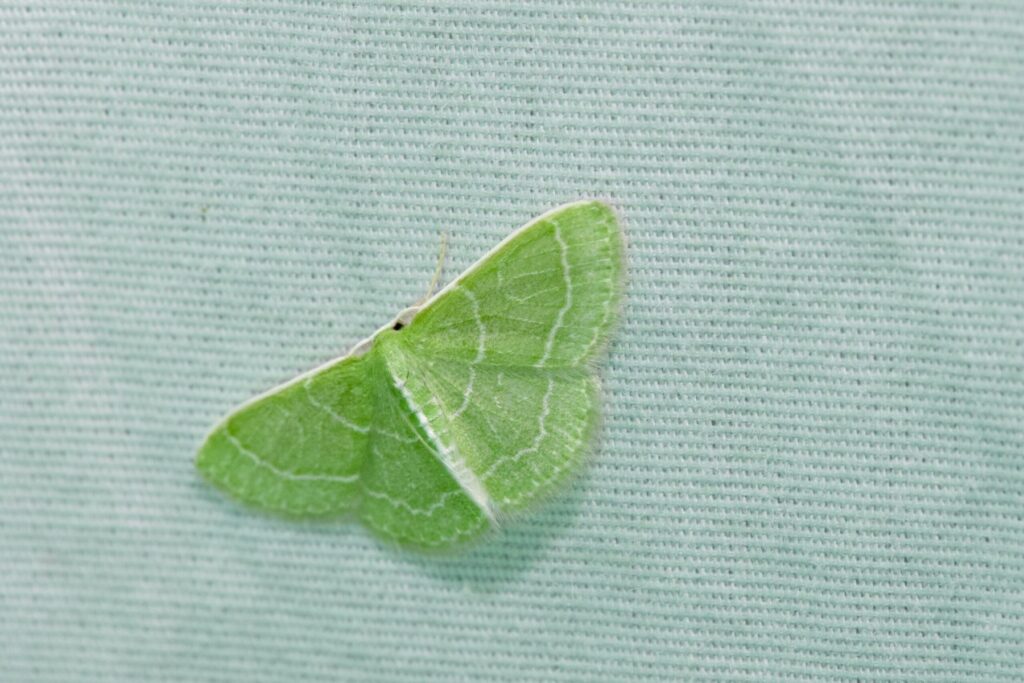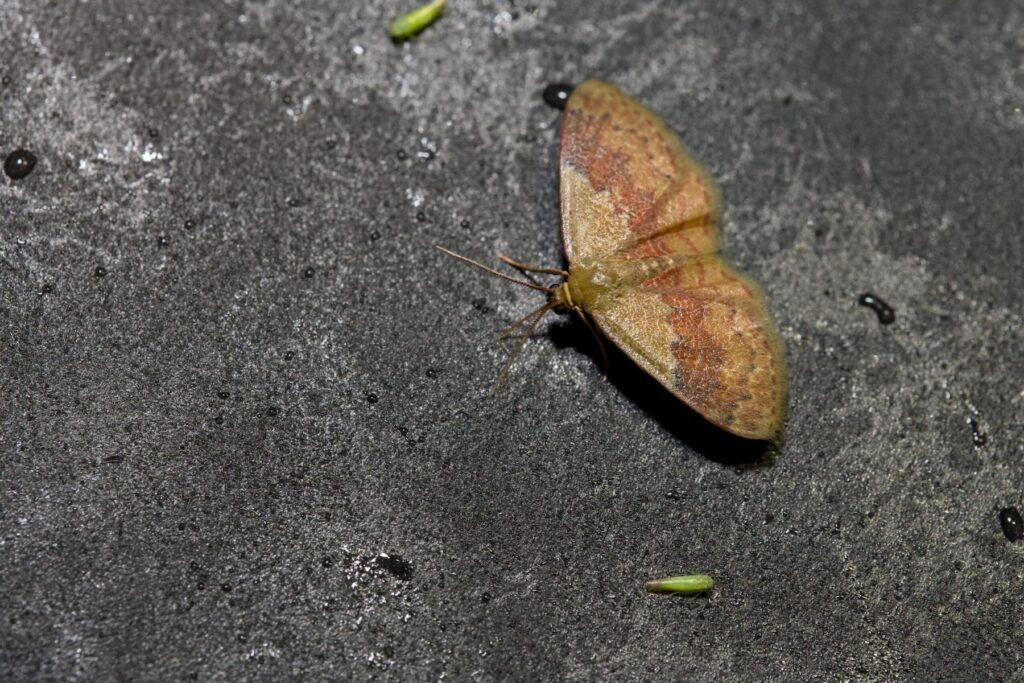
When it comes to large, winged insects, butterflies tend to demand attention. But moths far outnumber butterflies — with nine times as many species globally.
At least 11,000 of those moth species are in the U.S.
 Caroline Eggers WPLN News
Caroline Eggers WPLN NewsA sphinx moth landed on a park-goer at Bells Bend Park on July 28.
Insect enthusiasts saw dozens of moths Saturday night at Bells Bend Park in Nashville. The park hosted its annual “Moth Watch,” an educational event designed to help people learn about moths and how to identify them. Naturalists shined mercury lamps and blacklights onto white sheets.
“This is a good time to hunt,” said Steve Murphree, an entomologist and biology professor at Belmont University who helped spot various species like the sphinx and light-ribboned wave moths. He added that any summer month is ideal for attracting moths.
Anyone can recreate a “moth watch” at home.
“It can be as simple as having a back porch light and a white wall,” said Jessa Tremblay, a naturalist with Metro Nashville’s nature centers.
Connecting to the diverse world of moths could help people see past common perceptions. One complaint about moths is that they eat clothes — but only two of the more than 11,000 moth species in North America eat clothes.
These little critters also have important ecosystem functions.
“They’re a really important piece of the food chain, and we need to be able to support moth populations in order to sustain lots of other species,” Tremblay said.
 Caroline Eggers WPLN News
Caroline Eggers WPLN NewsNaturalists spotted the wavy-lined emerald moth in Bells Bend Park on July 28, 2024.
 Caroline Eggers WPLN News
Caroline Eggers WPLN NewsA light-ribboned wave moth lands on a lantern in Bells Bend Park on July 28, 2024.
Most moths are nocturnal critters, and some species can pollinate nocturnal plants like the moonflower. But some species are diurnal.
Moths also have a reputation for being dull and drab, but they can be just as colorful as butterflies — and, sometimes, more sparkly.

